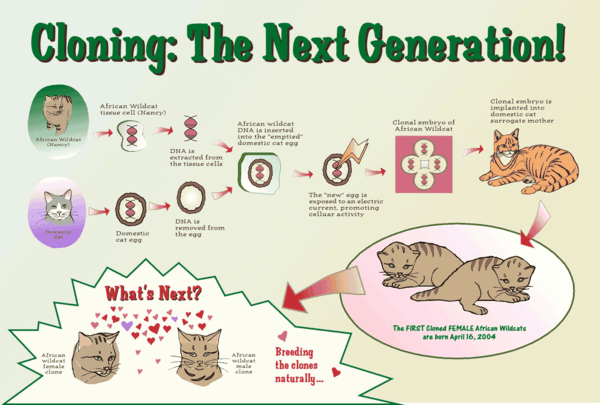
Cloning is a process whereby one organism is genetically copied identically in order to create another. The fact that they are genetically identical means that all of the DNA within the two are the same. Most clones are created in a lab and it takes a long time but there are some clones that are created naturally – identical twins.
Although the science of cloning has been around for decades one of the first insights that many people had was when Dolly the sheep was successfully cloned in 1997. There are a few different ways that you can successfully make a genetic copy of an organism such as somatic cell nuclear transfer and artificial embryo twinning.
Artificial embryo twinning is a process that imitates the process that an embryo goes through when identical twins are formed. Identical twins are genetically identical because they formed from the same egg within the mother; when the egg was fertilised, it split into two separate eggs forming two separate embryos.
Artificial embryo twinning uses this same idea; a single egg is split – in a lab – into several individual cells. Rather than being inside the mother when it happens, this process happens manually. Each of the cells are then allowed to develop on their own. Each of the individual embryos are then put into a surrogate mother until birth. When they’re delivered they will all be genetically identical because they all came from the same egg.
Somatic cell nuclear transfer is the process that was used to create Dolly the sheep; although this process creates a genetically identical organism it uses a completely different process to artificial embryo twinning.
Somatic cell nuclear transfer is a complicated process which mainly involves a single cell and a nucleus. This process however can only produce one clone form each egg. A somatic cell is any cell that is not an egg or sperm (the reproductive cells). Each of these somatic cells have two sets of chromosomes. The main and most important part of each cell is the nucleus which is the information centre. It holds all of the information that the cell will ever need in the form of DNA – the codes that make each of us unique. The transfer involves taking the nucleus from a somatic cell and putting it into a cell that no longer has a nucleus. Once this has been done the cell will begin to act like a fertilised egg and can therefore be put into the womb of a surrogate mother until birth. At birth the organism will be an exact replica of the one which donated the somatic cell.
Writer, Carly O’Neill believes Quantitative real time pcr is an important process when it comes to anything to do with genetics.










Comments